AMD 2003 Annual Report Download - page 16
Download and view the complete annual report
Please find page 16 of the 2003 AMD annual report below. You can navigate through the pages in the report by either clicking on the pages listed below, or by using the keyword search tool below to find specific information within the annual report.-
 1
1 -
 2
2 -
 3
3 -
 4
4 -
 5
5 -
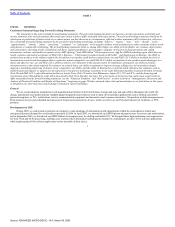 6
6 -
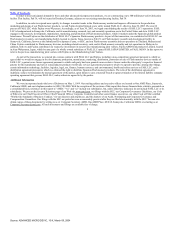 7
7 -
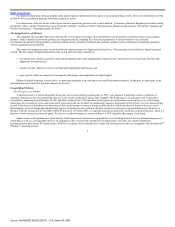 8
8 -
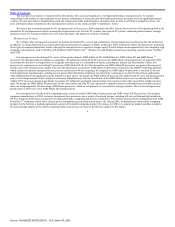 9
9 -
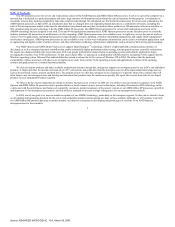 10
10 -
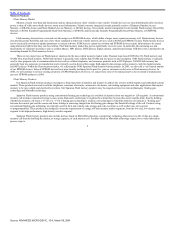 11
11 -
 12
12 -
 13
13 -
 14
14 -
 15
15 -
 16
16 -
 17
17 -
 18
18 -
 19
19 -
 20
20 -
 21
21 -
 22
22 -
 23
23 -
 24
24 -
 25
25 -
 26
26 -
 27
27 -
 28
28 -
 29
29 -
 30
30 -
 31
31 -
 32
32 -
 33
33 -
 34
34 -
 35
35 -
 36
36 -
 37
37 -
 38
38 -
 39
39 -
 40
40 -
 41
41 -
 42
42 -
 43
43 -
 44
44 -
 45
45 -
 46
46 -
 47
47 -
 48
48 -
 49
49 -
 50
50 -
 51
51 -
 52
52 -
 53
53 -
 54
54 -
 55
55 -
 56
56 -
 57
57 -
 58
58 -
 59
59 -
 60
60 -
 61
61 -
 62
62 -
 63
63 -
 64
64 -
 65
65 -
 66
66 -
 67
67 -
 68
68 -
 69
69 -
 70
70 -
 71
71 -
 72
72 -
 73
73 -
 74
74 -
 75
75 -
 76
76 -
 77
77 -
 78
78 -
 79
79 -
 80
80 -
 81
81 -
 82
82 -
 83
83 -
 84
84 -
 85
85 -
 86
86 -
 87
87 -
 88
88 -
 89
89 -
 90
90 -
 91
91 -
 92
92 -
 93
93 -
 94
94 -
 95
95 -
 96
96 -
 97
97 -
 98
98 -
 99
99 -
 100
100 -
 101
101 -
 102
102 -
 103
103 -
 104
104 -
 105
105 -
 106
106 -
 107
107 -
 108
108 -
 109
109 -
 110
110 -
 111
111 -
 112
112 -
 113
113 -
 114
114 -
 115
115 -
 116
116 -
 117
117 -
 118
118 -
 119
119 -
 120
120 -
 121
121 -
 122
122 -
 123
123 -
 124
124 -
 125
125 -
 126
126 -
 127
127 -
 128
128 -
 129
129 -
 130
130 -
 131
131 -
 132
132 -
 133
133 -
 134
134 -
 135
135 -
 136
136 -
 137
137 -
 138
138 -
 139
139 -
 140
140 -
 141
141 -
 142
142 -
 143
143 -
 144
144 -
 145
145 -
 146
146 -
 147
147 -
 148
148 -
 149
149 -
 150
150 -
 151
151 -
 152
152 -
 153
153 -
 154
154 -
 155
155 -
 156
156 -
 157
157 -
 158
158 -
 159
159 -
 160
160 -
 161
161 -
 162
162 -
 163
163 -
 164
164 -
 165
165 -
 166
166 -
 167
167 -
 168
168 -
 169
169 -
 170
170 -
 171
171 -
 172
172 -
 173
173 -
 174
174 -
 175
175 -
 176
176 -
 177
177 -
 178
178 -
 179
179 -
 180
180 -
 181
181 -
 182
182 -
 183
183 -
 184
184 -
 185
185 -
 186
186 -
 187
187 -
 188
188 -
 189
189 -
 190
190 -
 191
191 -
 192
192 -
 193
193 -
 194
194 -
 195
195 -
 196
196 -
 197
197 -
 198
198 -
 199
199 -
 200
200 -
 201
201 -
 202
202 -
 203
203 -
 204
204 -
 205
205 -
 206
206 -
 207
207 -
 208
208 -
 209
209 -
 210
210 -
 211
211 -
 212
212 -
 213
213 -
 214
214 -
 215
215 -
 216
216 -
 217
217 -
 218
218 -
 219
219 -
 220
220 -
 221
221 -
 222
222 -
 223
223 -
 224
224 -
 225
225 -
 226
226 -
 227
227 -
 228
228 -
 229
229 -
 230
230 -
 231
231 -
 232
232 -
 233
233 -
 234
234 -
 235
235 -
 236
236 -
 237
237 -
 238
238 -
 239
239 -
 240
240 -
 241
241 -
 242
242 -
 243
243 -
 244
244 -
 245
245 -
 246
246 -
 247
247 -
 248
248 -
 249
249 -
 250
250 -
 251
251 -
 252
252 -
 253
253 -
 254
254 -
 255
255 -
 256
256 -
 257
257 -
 258
258 -
 259
259 -
 260
260 -
 261
261 -
 262
262 -
 263
263 -
 264
264 -
 265
265 -
 266
266 -
 267
267 -
 268
268 -
 269
269 -
 270
270 -
 271
271 -
 272
272 -
 273
273 -
 274
274 -
 275
275 -
 276
276 -
 277
277 -
 278
278 -
 279
279 -
 280
280 -
 281
281 -
 282
282 -
 283
283 -
 284
284 -
 285
285 -
 286
286 -
 287
287 -
 288
288 -
 289
289 -
 290
290 -
 291
291 -
 292
292 -
 293
293
 |
 |

Table of Contents
• trade protection measures and import or export licensing requirements;
• difficulty in protecting our intellectual property;
• changes in foreign currency exchange rates and currency controls, which may impact, among other things our gross margins;
• changes in freight and interest rates;
• disruption in air transportation between the United States and our overseas facilities; and
• loss or modification of exemptions for taxes and tariffs.
In 2004, we plan to make additional capital investments in our assembly and test facilities.
Certain Material Agreements. Descriptions of certain material contractual relationships we have relating to FASL LLC are set forth on page 2, above,
and page 14, below, and relating to Fab 30 are set forth on page 34, below. A description of our principal contractual relationships with IBM is set forth on page
9, above.
Competition
The integrated circuit industry is intensely competitive. Products compete on performance, quality, reliability, price, adherence to industry standards,
software and hardware compatibility, marketing and distribution capability, brand recognition and availability. Technological advances in the industry result in
frequent product introductions, regular price reductions, short product life cycles and increased product capabilities that may result in significant performance
improvements.
In each area of the digital integrated circuit markets in which we participate, we face competition from different companies.
Competition in the Microprocessor Market
Intel has dominated the market for microprocessors used in desktop and mobile PCs for many years. Intel is also a significant competitor in the server
segment of the microprocessor market. Because of its dominant position, Intel has also been able to control x86 microprocessor and PC system standards and
dictate the type of products the microprocessor market requires of Intel’s competitors. In addition, Intel’s significant financial resources allow it to market its
products aggressively, to target our customers and our channel partners with special incentives, and to discipline customers who do business with us. These
aggressive activities can result in lower unit sales and average selling prices for us and adversely affect our margins and profitability. Intel also exerts substantial
influence over PC manufacturers and their channels of distribution through the “Intel Inside” brand program and other marketing programs. As long as Intel
remains in this dominant position, we may be materially and adversely affected by its:
• pricing and allocation strategies and actions;
• product mix and introduction schedules;
• product bundling, marketing and merchandising strategies;
• exclusivity payments to its current and potential customers;
• control over industry standards, PC manufacturers and other PC industry participants, including motherboard, chipset and basic input/output system, or
BIOS, suppliers; and
• user brand loyalty.
Intel also dominates the PC system platform. As a result, PC OEMs are highly dependent on Intel, less innovative on their own and, to a large extent, are
distributors of Intel technology. In marketing our
11
Source: ADVANCED MICRO DEVIC, 10-K, March 09, 2004
